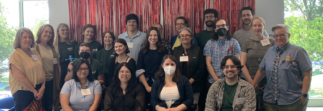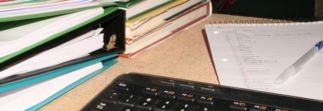It’s something the Future of Libraries Task Force heard time and again, from faculty and staff, students and alumni: the critical importance of the library as a physical space. A library is a place where communities can gather, to interact with one another and with scholarly objects and tools or to retreat and think deeply. Here are some of the ways our library spaces are evolving—and may be reimagined in the future—to achieve the ambitious vision set out by the task force.
Building a vision
In December 2016, Director Chris Bourg convened a Libraries Space Planning Group. Chaired by Bourg and J. Meejin Yoon, professor and head of the Department of Architecture, the group determined that library spaces can and should be redesigned and reconfigured to suit the future needs of the campus. They put forth four essential functions that library spaces serve: holdings, learning, community, and creating. In March the group laid out a space renovation and reprogramming path for Building 14 to begin achieving the task force’s recommendations. It embraces a shift from libraries being primarily a container for knowledge used for information consumption toward being spaces that also support the creation of knowledge and community.
“The Libraries are well known as spaces for collections and where studying happens, but I think MIT is increasingly recognizing the role that libraries play in teaching and fostering scholarly community.”
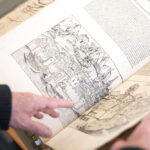 Says Tracy Gabridge, the Libraries’ deputy director: “The MIT community also recognizes the expertise of library staff to support creating and disseminating new digital information objects, such as audio, layers of geographic data, research data sets, and more.” The group discussed, for example, how Hayden Library could be used more effectively as a place for formal and informal events that bring people together across departments and schools. The Lewis Music Library, already an essential gathering place for the MIT music community, could increase its focus on creating, particularly related to audio/visual production. A rich array of services—in GIS, open access and copyright support, research data management, digital sustainability, and research in information science— should all be made more visible to users. “As libraries, we provide a foundation upon which the MIT community can create and flourish,” says Gabridge. “We could be using our spaces better to showcase how we inspire and facilitate work.”
Says Tracy Gabridge, the Libraries’ deputy director: “The MIT community also recognizes the expertise of library staff to support creating and disseminating new digital information objects, such as audio, layers of geographic data, research data sets, and more.” The group discussed, for example, how Hayden Library could be used more effectively as a place for formal and informal events that bring people together across departments and schools. The Lewis Music Library, already an essential gathering place for the MIT music community, could increase its focus on creating, particularly related to audio/visual production. A rich array of services—in GIS, open access and copyright support, research data management, digital sustainability, and research in information science— should all be made more visible to users. “As libraries, we provide a foundation upon which the MIT community can create and flourish,” says Gabridge. “We could be using our spaces better to showcase how we inspire and facilitate work.”
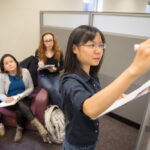 Study space experiments
Study space experiments
When the Libraries rearranged Hayden Library’s collections in January, it offered an opportunity to experiment with portions of the reading rooms. Stacks were removed from the two mezzanine levels, which will be transformed into areas for reflective and collaborative work and learning. During the fall semester, the center mezzanines will be upgraded with power outlets and task lighting, soundscaping, and new furniture—suggestions gathered by sifting through past survey data and feedback gathered by the Future of Libraries Task Force. Following the experiment, Libraries staff will gather feedback from the community about how to equip the remaining mezzanines, information that will ultimately guide renovations to Hayden and other study spaces.
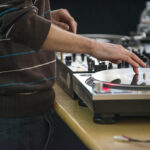 Lewis Music Library Audio Lab
Lewis Music Library Audio Lab
Classes at MIT increasingly require students to create audio components as part of their assignments. As usual, the Lewis Music Library is adapting to meet these evolving needs. “There has been a need on campus for an audio lab where students can compose, edit, and mix music,” says Peter Munstedt, music librarian. Working together with faculty, the library created a prototype for such a lab: a room housing two workstations with computers and audio equipment, outfitted with acoustical panels and new lighting. The library’s new audio lab will help determine faculty and student interest and plan for additional facility needs moving forward. “The audio lab is open to the whole MIT community,” says Munstedt. “There’s really no other space like it on campus.”
Additional space projects
Also underway are plans for an active learning classroom in Barker Library, a dedicated event area with flexible furniture in Hayden Library, and expanding the GIS Lab along with providing space for research data management staff in Rotch Library.
